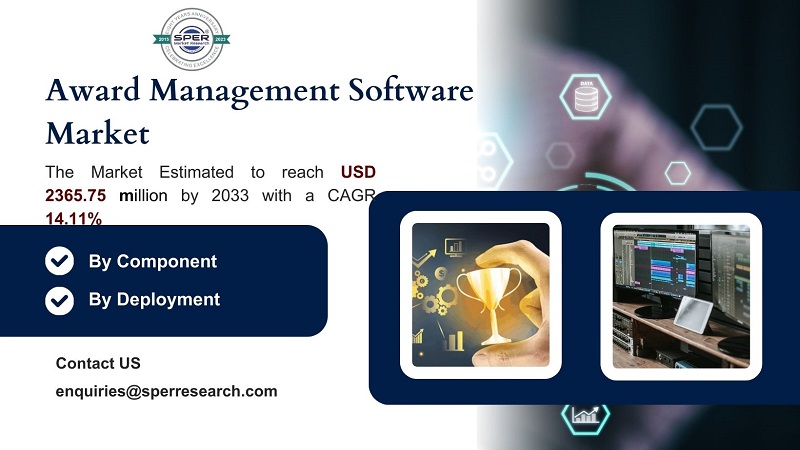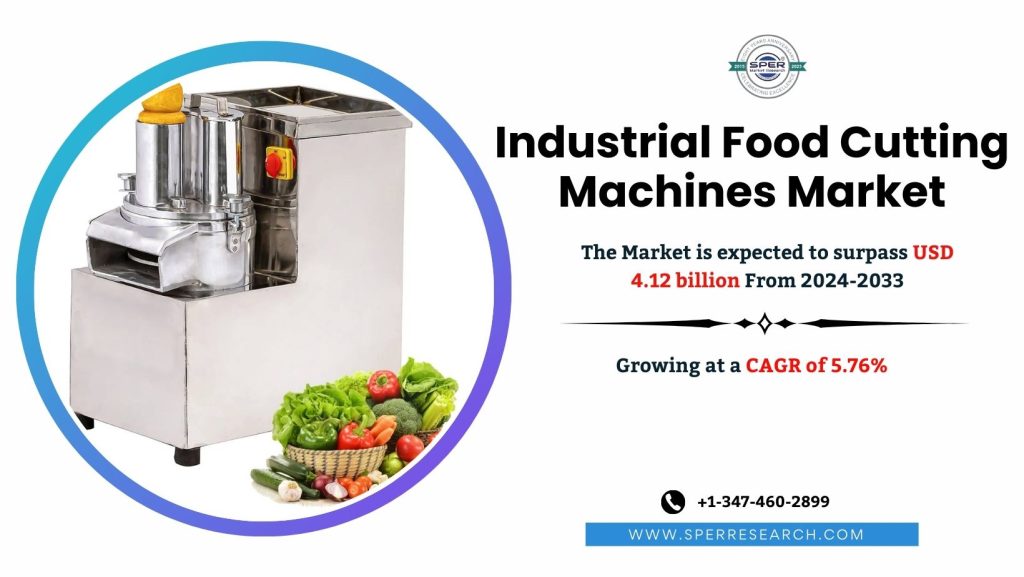A centralized platform for award administration software may assist any firm handle its award process effectively. The award administration software solution facilitates efficient communication with reviewers, sponsors, applicants, and award organizations. It also enables businesses to properly and efficiently manage data. Organizations that have increased their use of award management software are seeing the need for changes in the award process and a speedy screening of award candidates. Businesses utilize this software to effectively manage the award process, which includes the selection, compilation, and evaluation of applications, decisions, and submissions.
According to SPER market research, ‘Global Award Management Software Market Size- By Component, By Deployment, By Vertical – Regional Outlook, Competitive Strategies and Segment Forecast to 2033’ state that the Global Award Management Software Market is predicted to reach 2365.75 million by 2033 with a CAGR of 14.11%.
Drivers: The market’s main growth drivers are the growing need for process automation in businesses, the emphasis on implementing cutting-edge technological tools to increase productivity, and the advantages that award management software provides in terms of data handling, voting management, application tracking, and other areas.
Enterprises across many sectors and governmental organizations are progressively embracing technology and innovative solutions that automate procedures like award administration. Prize catalog creation, prize collection, campaign development, reward uploads, reward targeting, stock management, fulfillment, reward features, coupon addition, coupon administration, and more are all part of the function.
Restraints: Some award management software systems have a lot of features that can be hard to understand and master, making them challenging to utilize. Because of this, users might find it difficult to use systems correctly, which would hinder adoption. Additionally, having too many features might overwhelm businesses and consumers, which could lead to a delayed adoption of improved capabilities and diminished effectiveness.
The majority of award programs require the processing of private information, including employee or student personal data. This raises the risk of data breaches, which could deter businesses from using cloud-based solutions. The adoption of award administration software may be hampered by businesses’ requirement to comply with strict data privacy regulations like the GDPR.
Request a Free Sample Report: https://www.sperresearch.com/report-store/award-management-software-market.aspx?sample=1
Many new enterprises and people’s lives were disrupted by the COVID-19 waves, and the issue is predicted to have an effect on the market share of awards management software, which has given the sector a pessimistic image. Because of the COVID-19 issue, the size of the worldwide awards management software industry is probably going to decrease.
In an effort to reduce the market share of awards management software relative to the pre-pandemic period, the government implemented regulations pertaining to the software during the COVID-19 waves. Regulations including those pertaining to gift certificates, data security, privacy, stamps, and so forth have an impact on the growth of the awards management software market.
North America dominated the worldwide award management software market in 2024. The presence of numerous large enterprises from various sectors in the region, the growing adoption of technology tools to ensure enhanced processes, reduced costs, and improved outcomes, the increasing emphasis on digital transformation, and the availability of multiple cloud-deployed technology solutions for award management are some of the key growth drivers for this market. Some significant market players are AcclaimWorks Ltd; ALPHA; Award Force (Creative Force Ltd); AwardStage; Blackbaud, Inc; and others.
Award Management Software Market Segmentation:
By Component: Based on the Component, Global Award Management Software Market is segmented as; Solution, Services.
By Deployment: Based on the Deployment, Global Award Management Software Market is segmented as; On-Premises, Cloud.
By Vertical: Based on the Vertical, Global Award Management Software Market is segmented as; Government, Educational Institute, Corporation, Industry Association, Philanthropic Organization, Others.
By Region: This research also includes data for North America, Asia-Pacific, Latin America, Middle East & Africa and Europe.
For More Information, refer to below link: –
Award Management Software Market Outlook
Related Reports:
Follow Us –
LinkedIn | Instagram | Facebook | Twitter
Contact Us:
Sara Lopes, Business Consultant – U.S.A.
+1-347-460-2899









